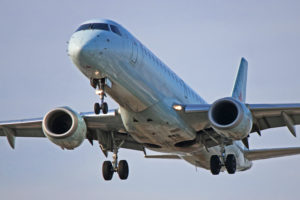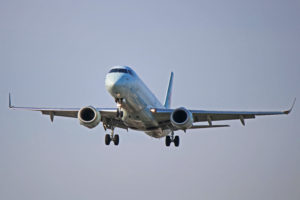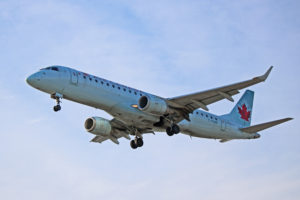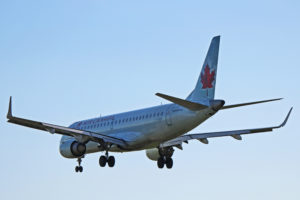 C-FHNP is one of 25 Embraer ERJ-190AR aircraft in the main Air Canada fleet. For now. The Canadian airline is planning on phasing out their E190 fleet over the next few years. We photographed this particular Embraer 190 on June 29, 2018 while plane spotting at Toronto Pearson International Airport (YYZ).
C-FHNP is one of 25 Embraer ERJ-190AR aircraft in the main Air Canada fleet. For now. The Canadian airline is planning on phasing out their E190 fleet over the next few years. We photographed this particular Embraer 190 on June 29, 2018 while plane spotting at Toronto Pearson International Airport (YYZ).
For full-size, high resolution versions for any of the photos in the image gallery, simply click on the individual pictures. See below for more detailed information on C-FHNP, the Embraer ERJ-190AR model in general and the airline.
Image Gallery
C-FHNP
Embraer ERJ-190AR
Air Canada
Resources
C-FHNP Air Canada Embraer 190 Image Gallery
Want to use one of these photos for your website, blog or news site? They’re free to use – take a look at our Photo Usage Policy.
C-FHNP
C-FHNP was delivered to Air Canada on March 30, 2007. This is one of 25 Embraer 190 airliners currently in the main fleet. The airplane is configured for a maximum of 97 passengers with nine seats in business class and 88 economy class seats.
On December 27, 2008, about a year and half after entering service, C-FHNP was flying from Vancouver, British Columbia to Winnipeg, Manitoba. On the climb, at 17,000 feet, a slat fail message was received. The flight carried on. Coming into YWG, the slats did not extend but crew were able to land the plane safely. As a result, the slat skew sensor for the right side slats #3 and #4 was replaced.
On a flight from Nashville, Tennessee to Toronto, Ontario on June 24, 2012, the E190 experienced issues after reaching 27,000 feet. A ‘Cabin Altitude High’ message was received and crew began an emergency descent to 10,000 feet. The flight continued to YYZ for a safe landing. As a result, the cabin pressure control system was replaced.
On June 15, 2015, C-FHNP was flying from Toronto to St. John’s, Newfoundland. At 37,000 feet, just north of Bangor, Maine, an electrical smell was detected in the cabin and the aircraft was diverted to Bangor. On the descent, the odour dissipated and the airplane landed safely at the airport in Maine. A replacement, C-FHIU was brought in to carry on the flight with a delay of eight hours. Ultimately, the ‘Fasten Seat Belt’ sign in row 18 was the source of the smell and was replaced.
Embraer E190
The Embraer 190 performed its maiden flight on March 12, 2004 and was first delivered to launch customer JetBlue in 2005. JetBlue remains the top operator for this kind of aircraft. The E190 is 36 metres or 119 feet in length with a wingspan of 29 metres or 94 feet. At the tail, the airplanes stands eleven metres or 35 feet in height. The flight range is 4,537 kilometres.
Air Canada
Air Canada was founded as Trans Canada Air Lines in 1937. The name was officially switched on January 1, 1965. There are nearly 190 aircraft in the main fleet with over 400 when subsidiaries are included. The largest in the fleet is the Boeing 777-300ER. The airline flies to close to 210 destinations around the world (350 with subsidiaries included).
Headquartered at the Air Canada Centre on the grounds of Montreal Pierre Elliott Trudeau International Airport (YUL) in Dorval, Quebec, the airline is a founding member of the Star Alliance. Other founding members include Lufthansa, Scandinavian Airlines, Thai Airways and United Airlines. There are now 27 full member airlines worldwide.
Resources
Nashville International Airport




